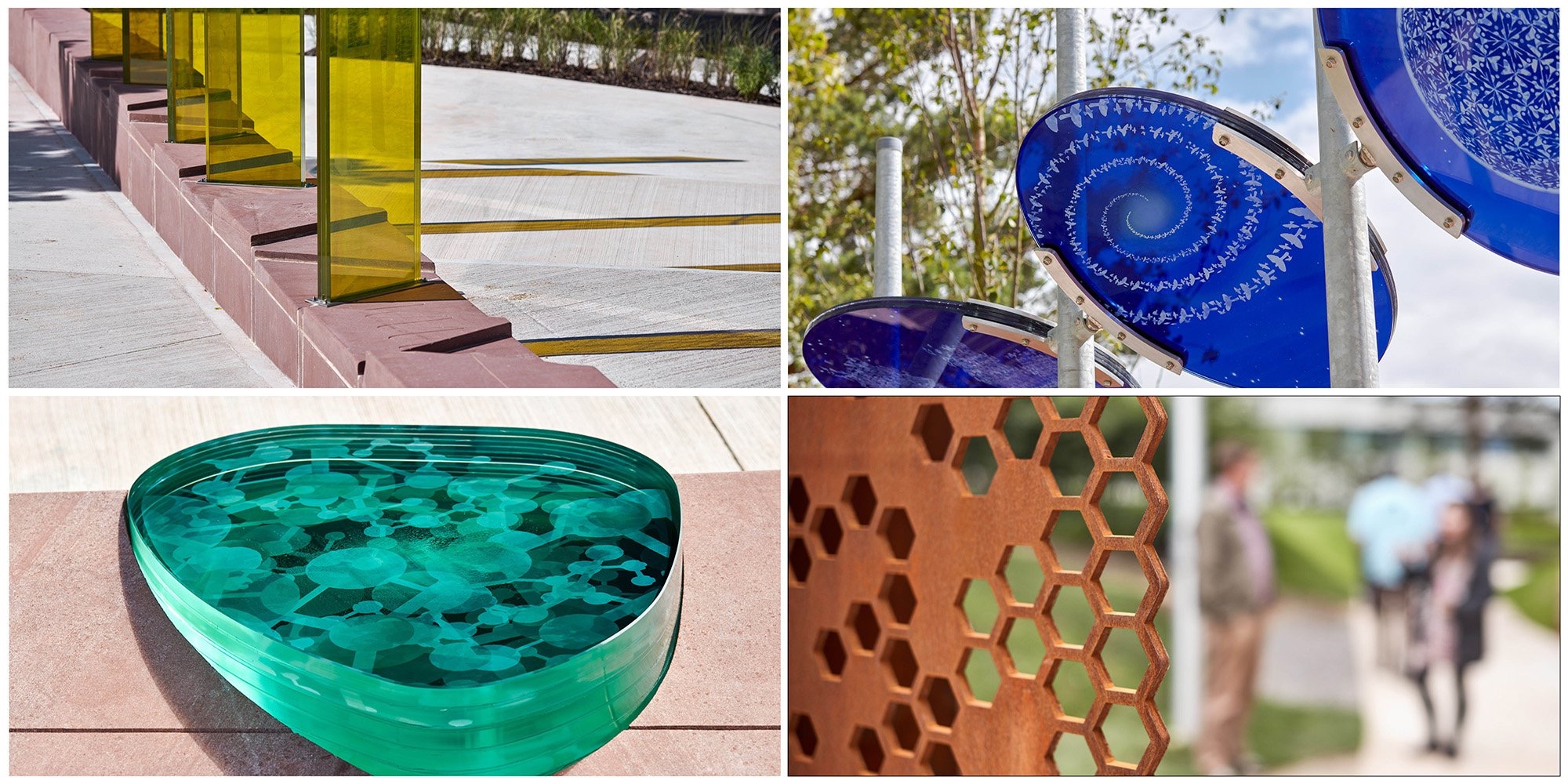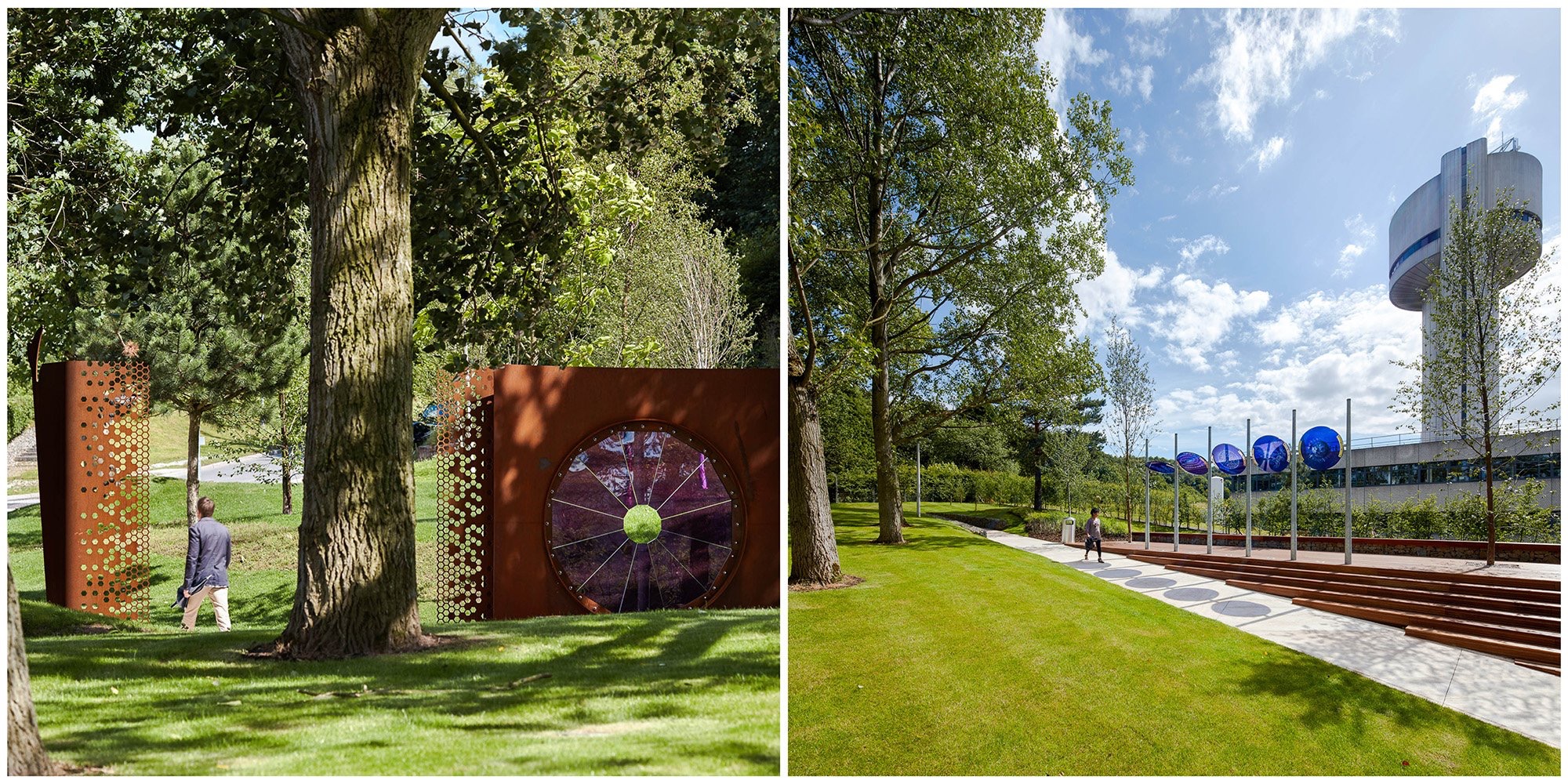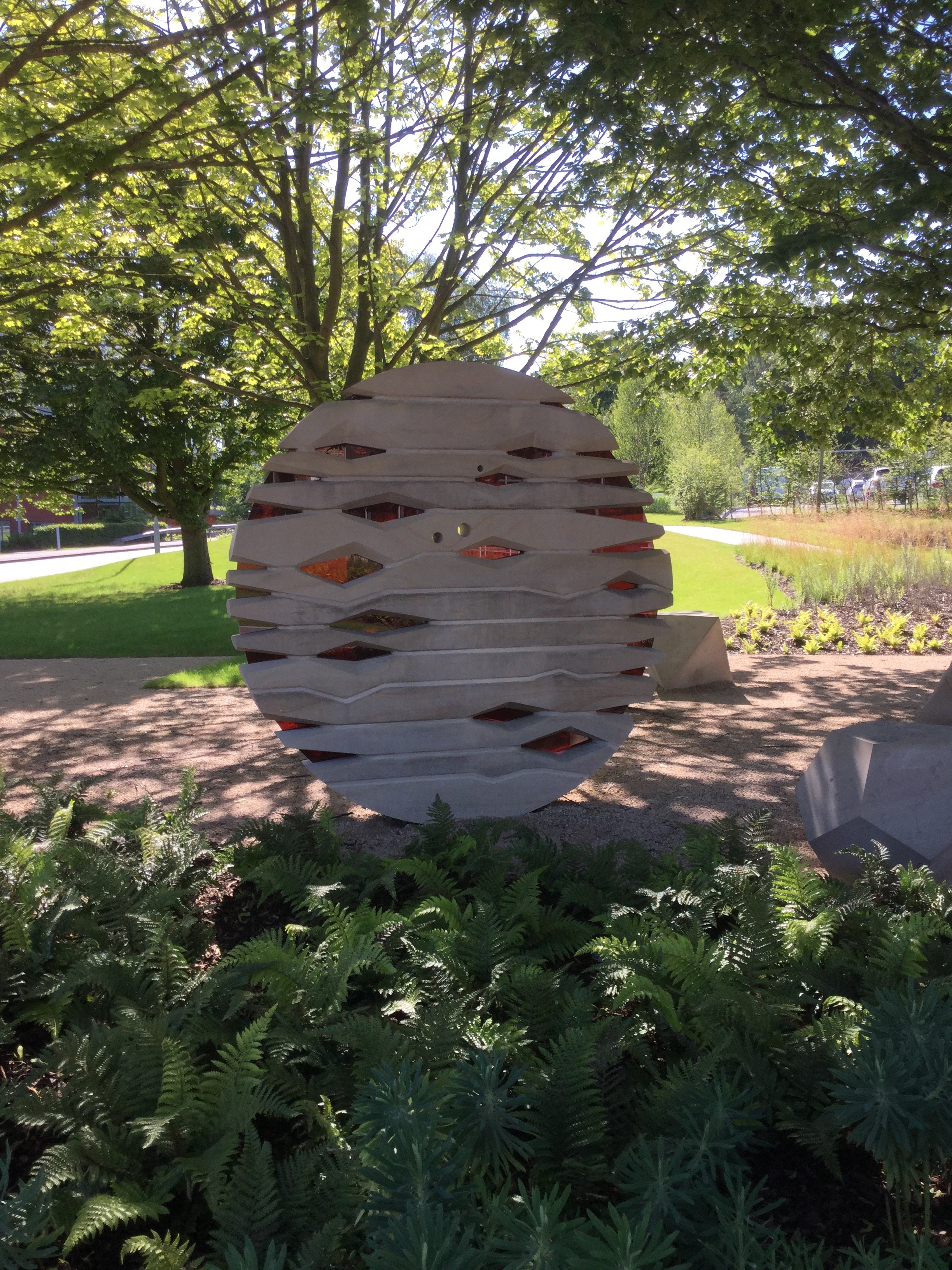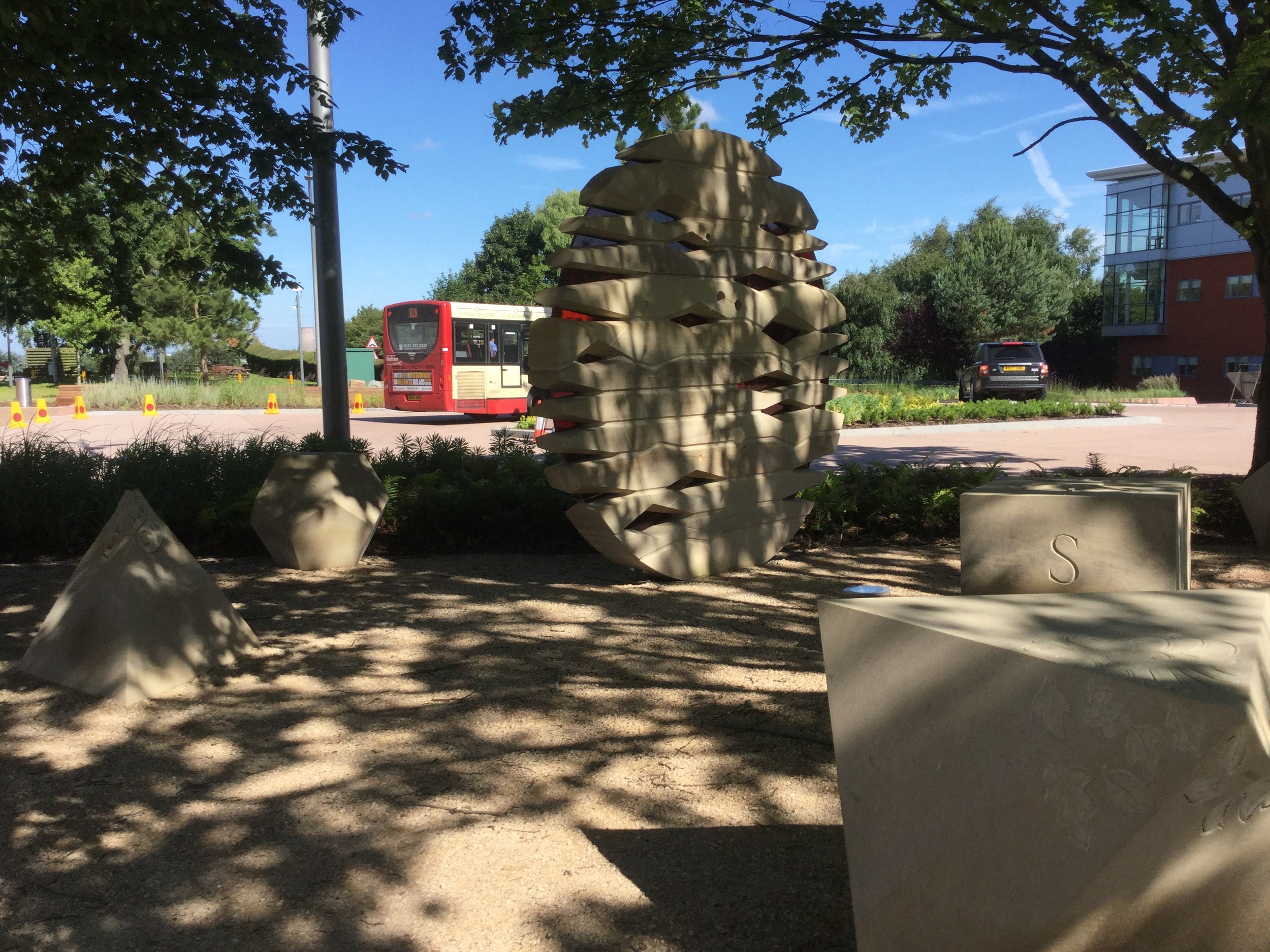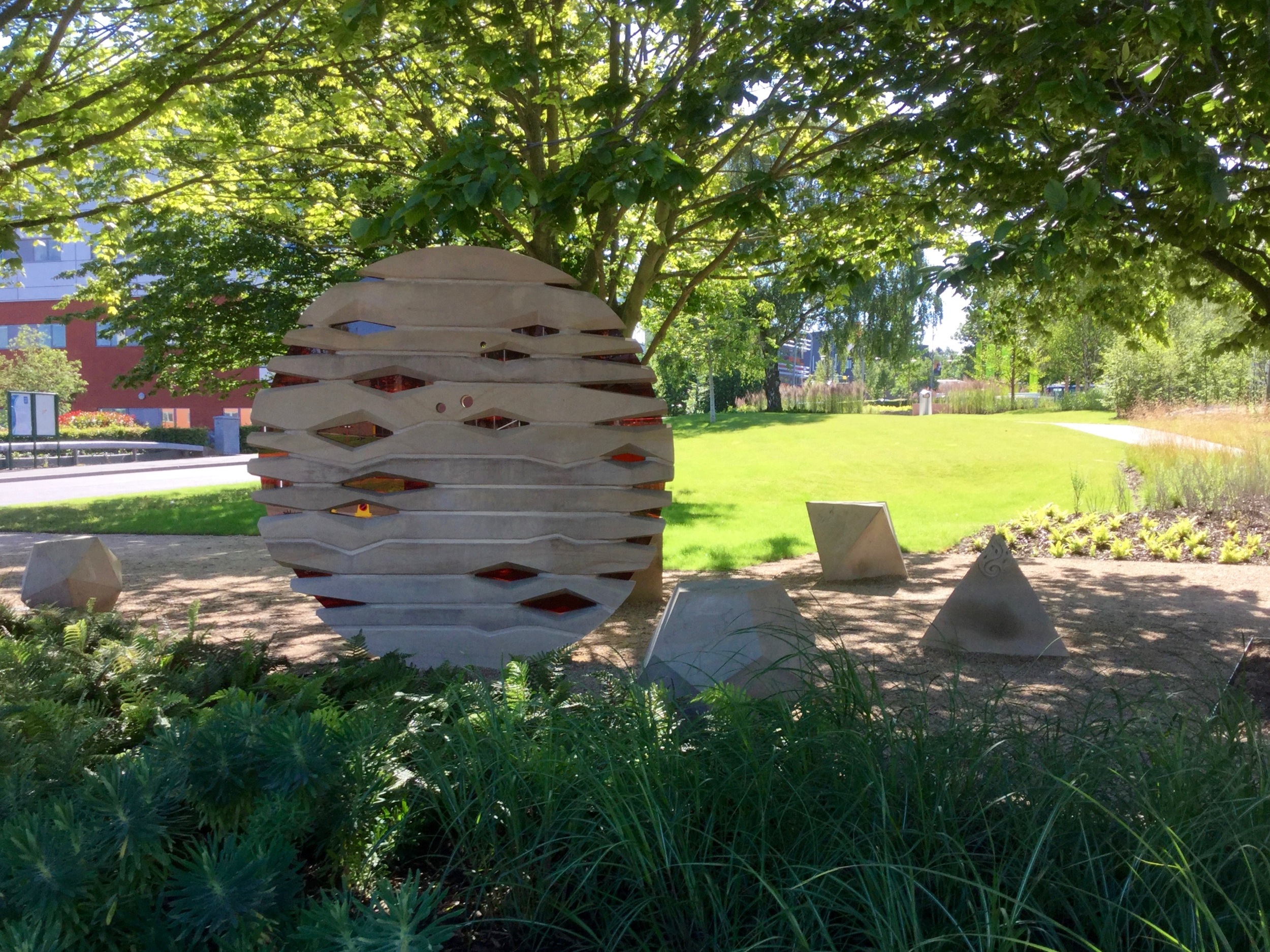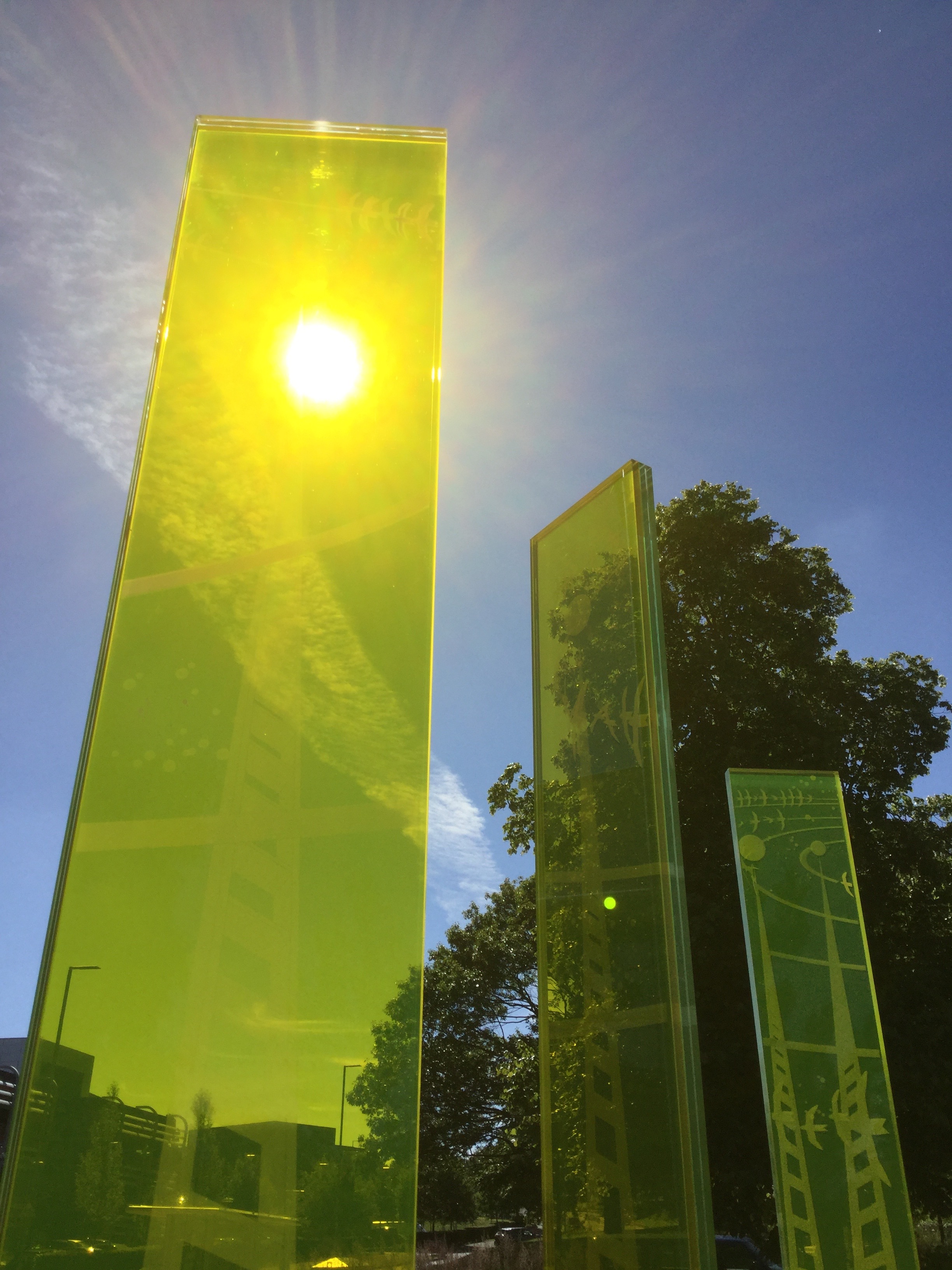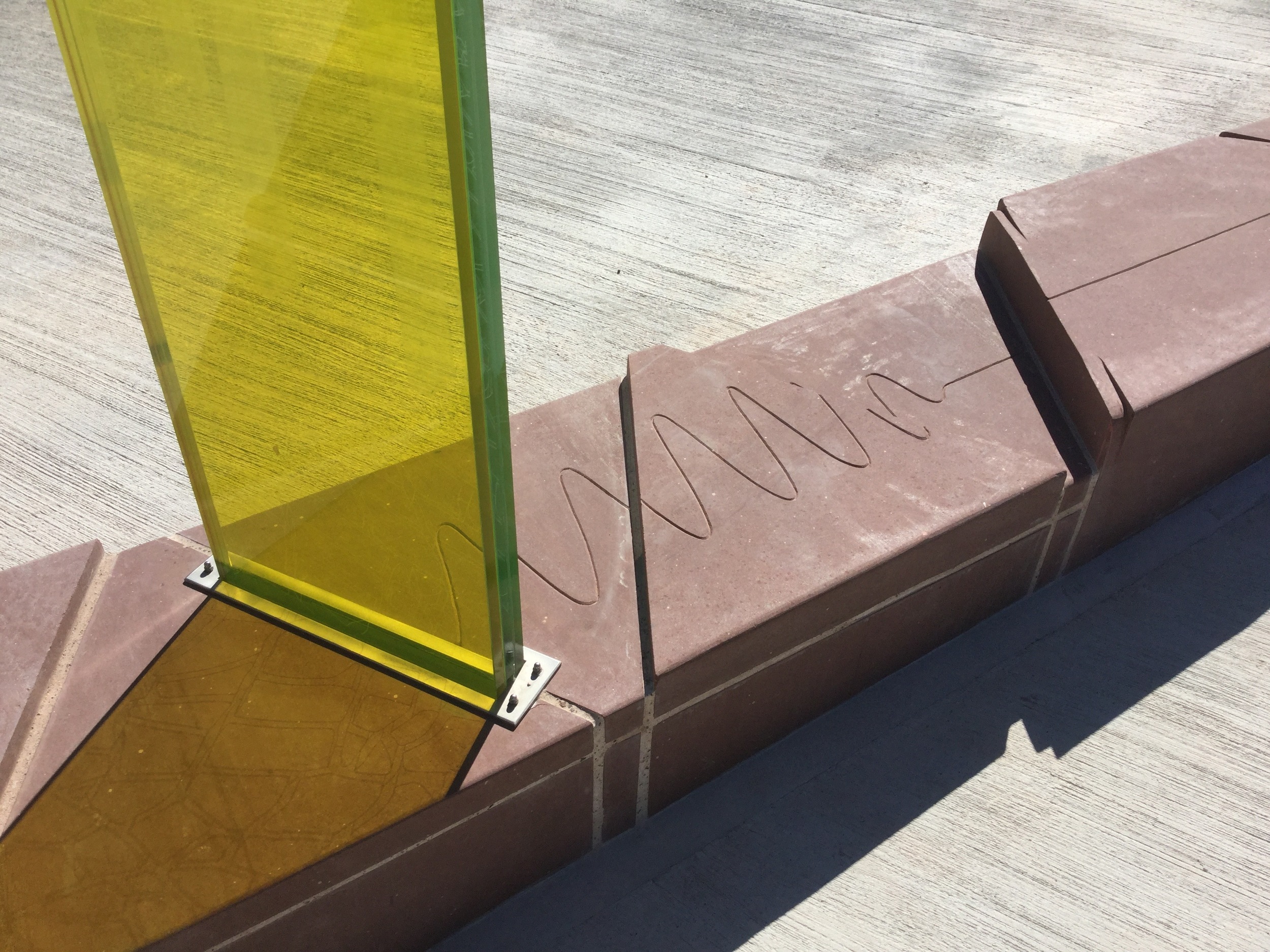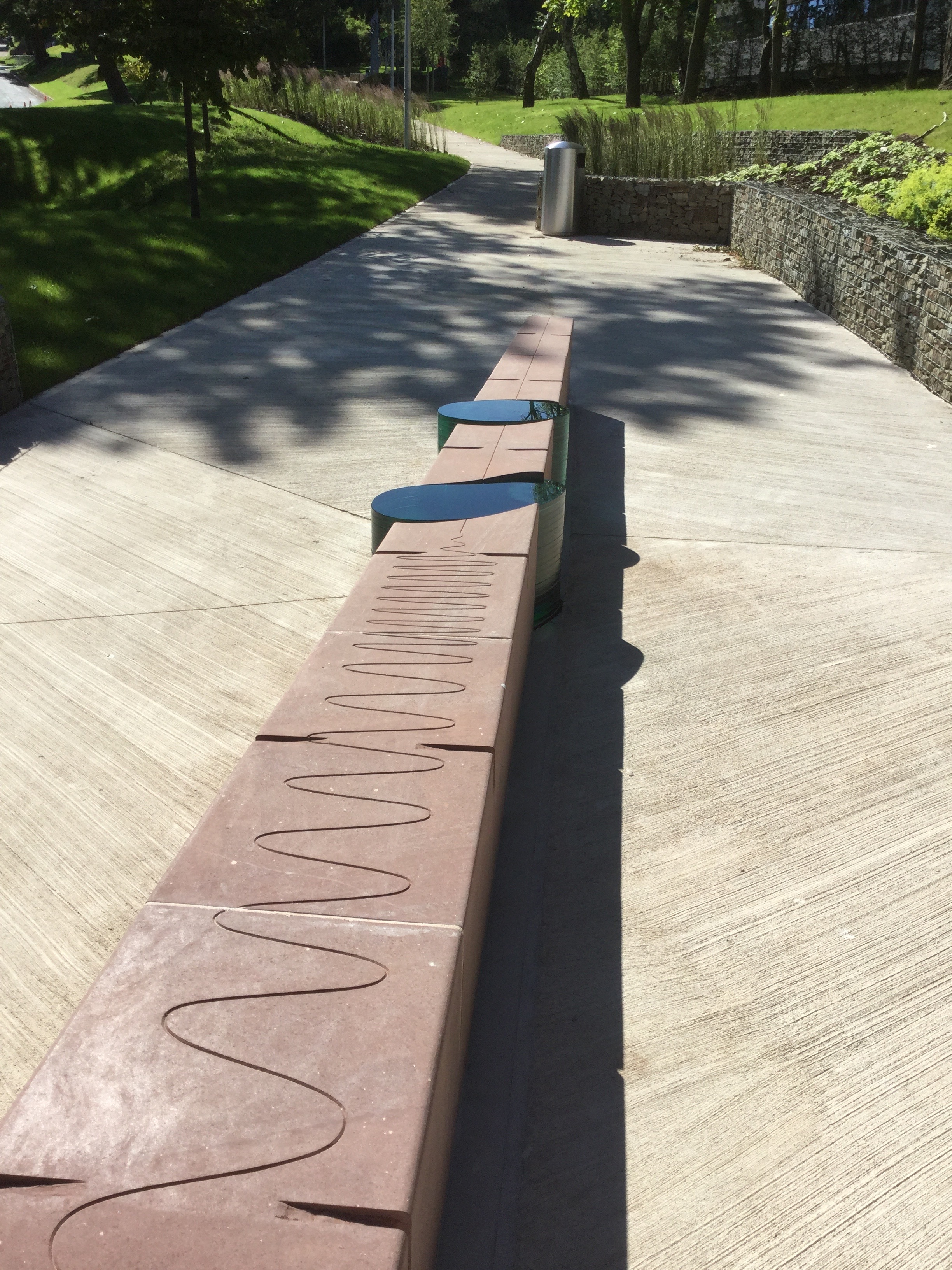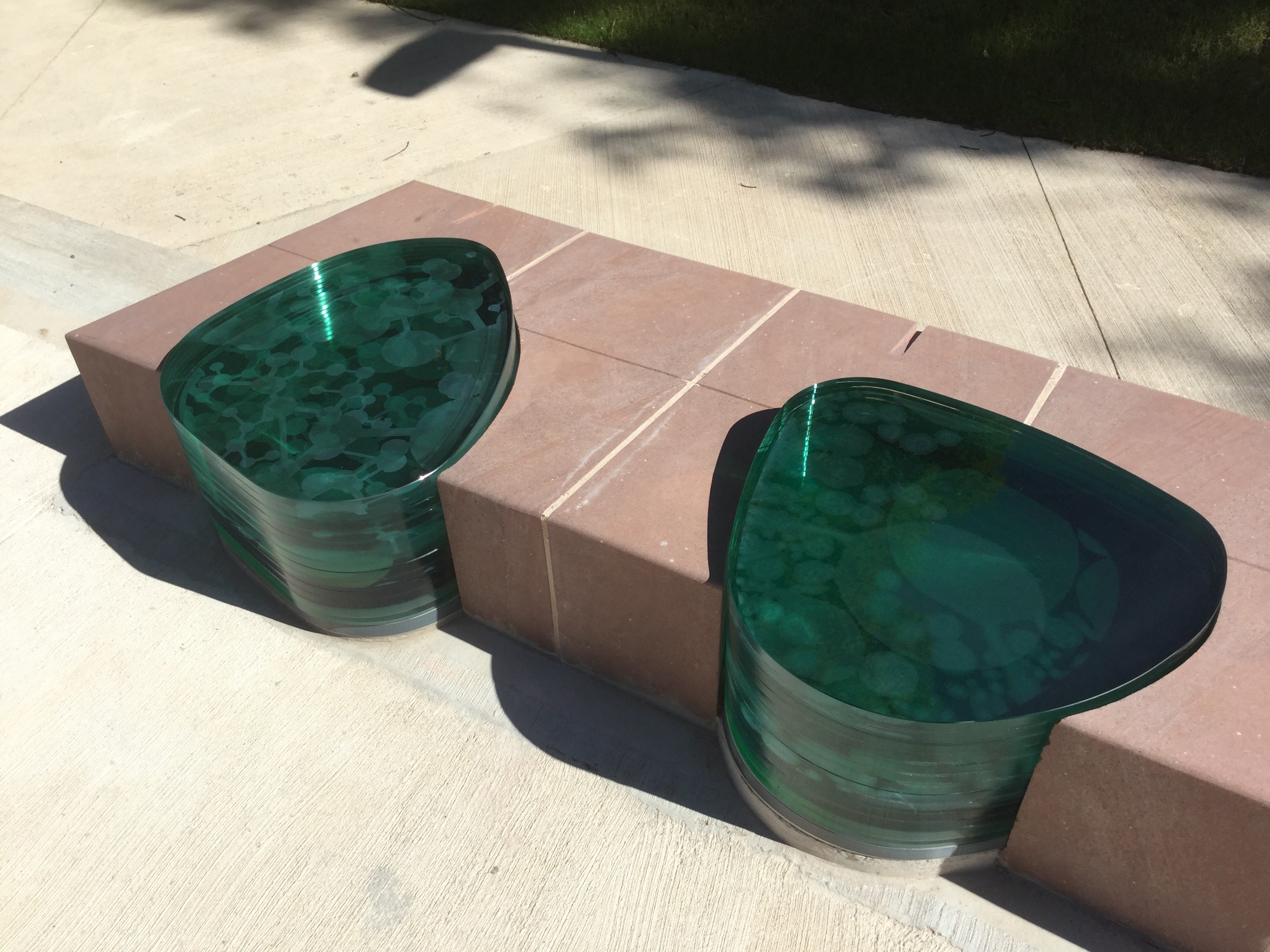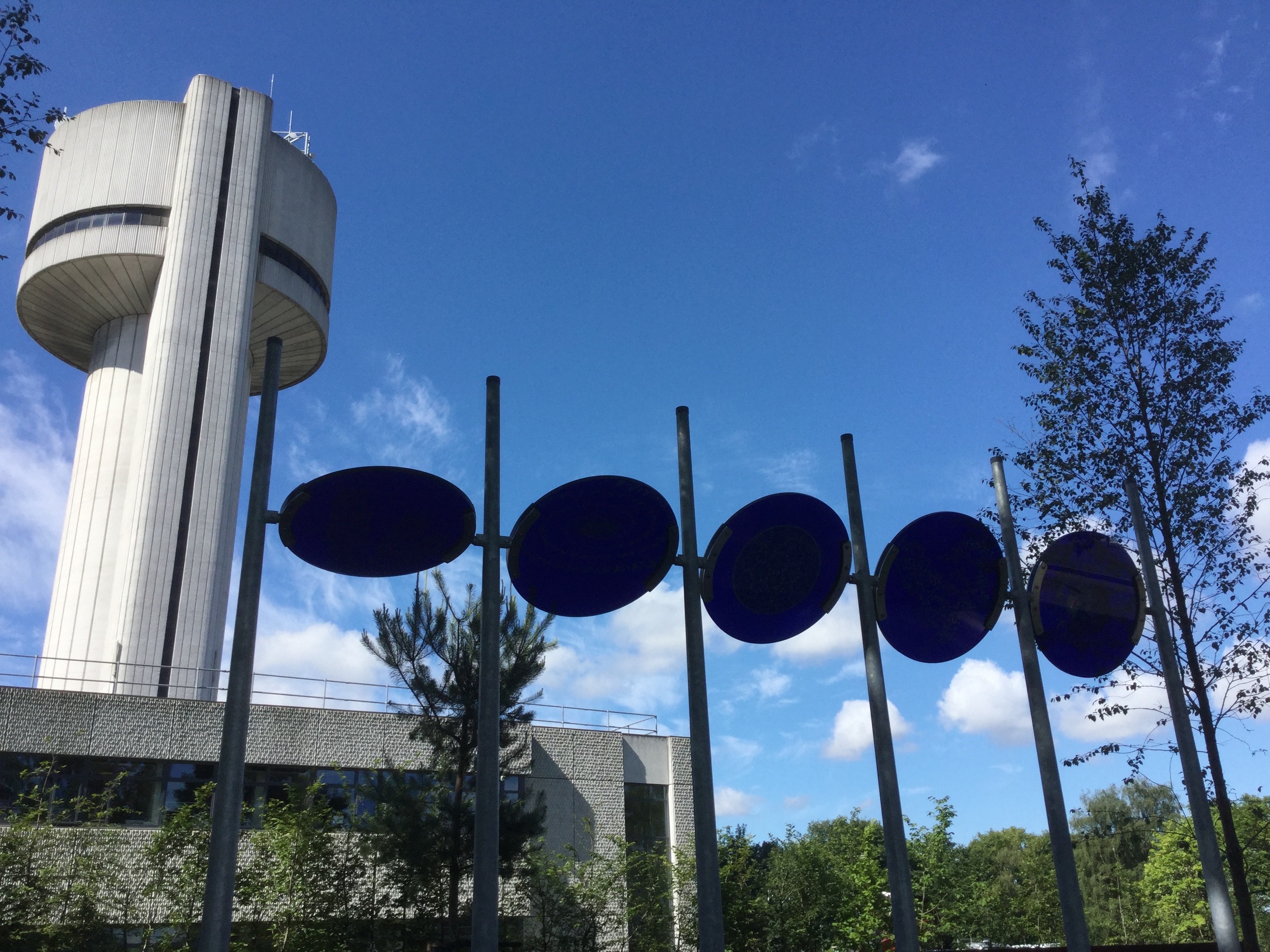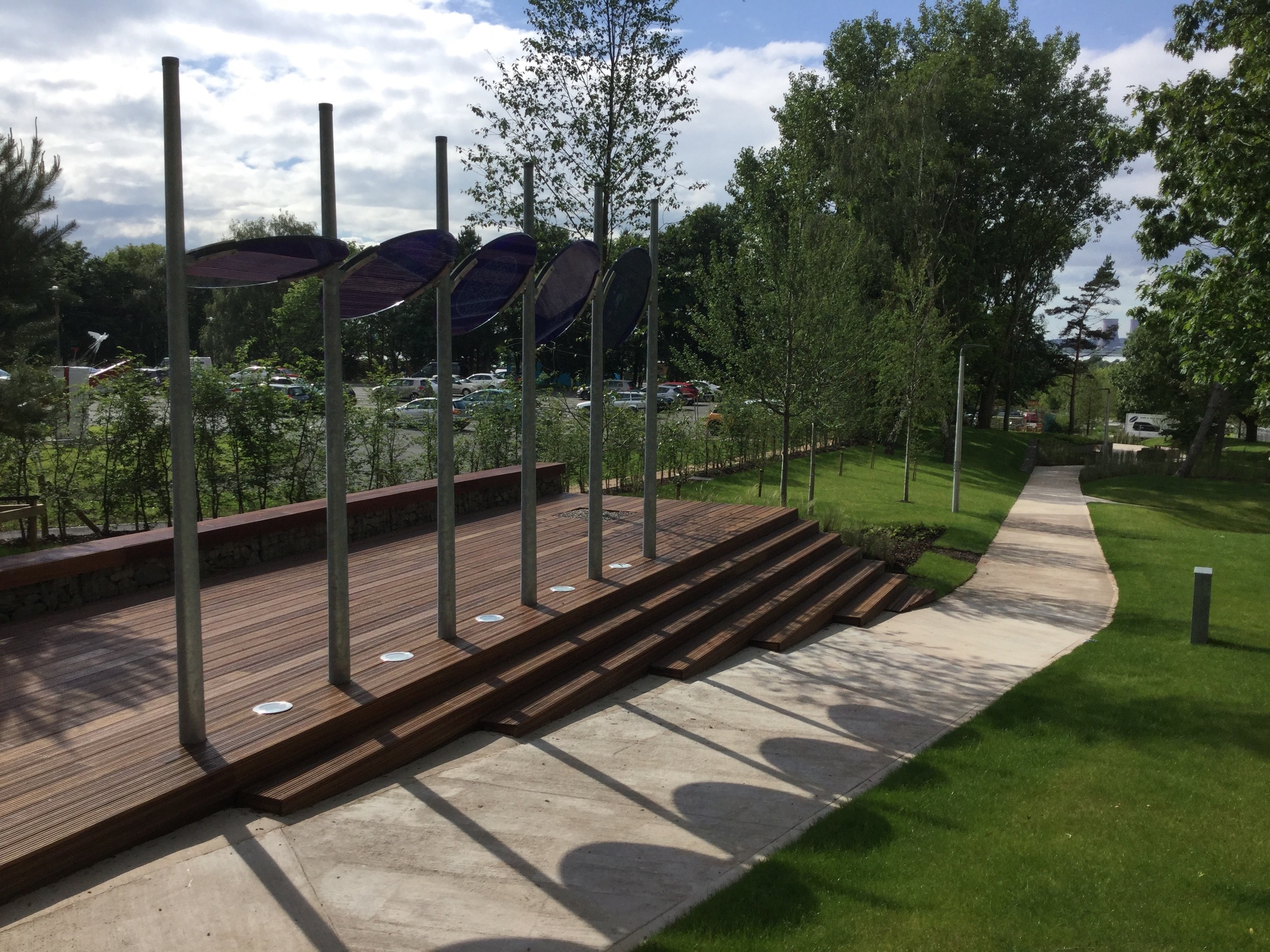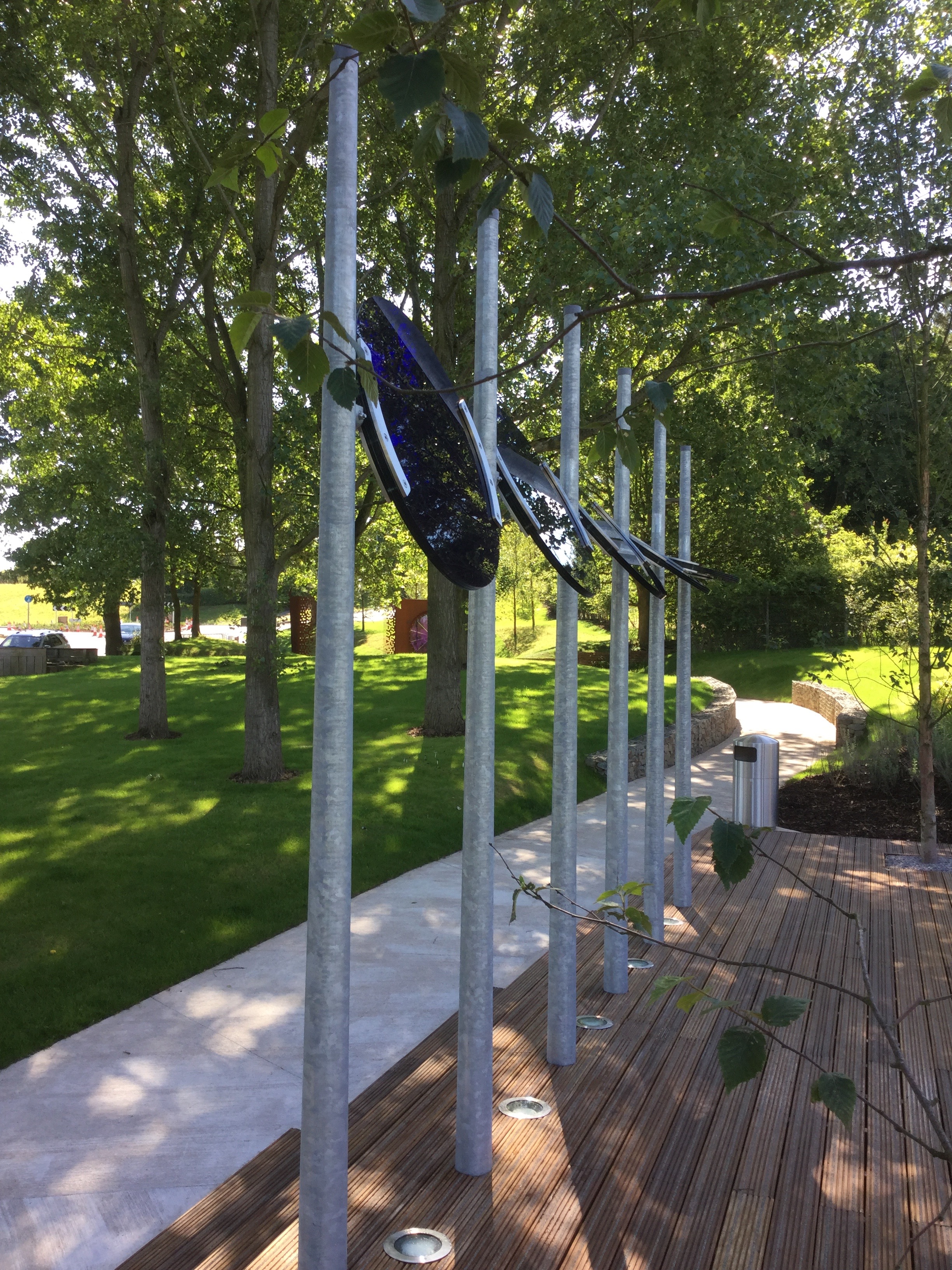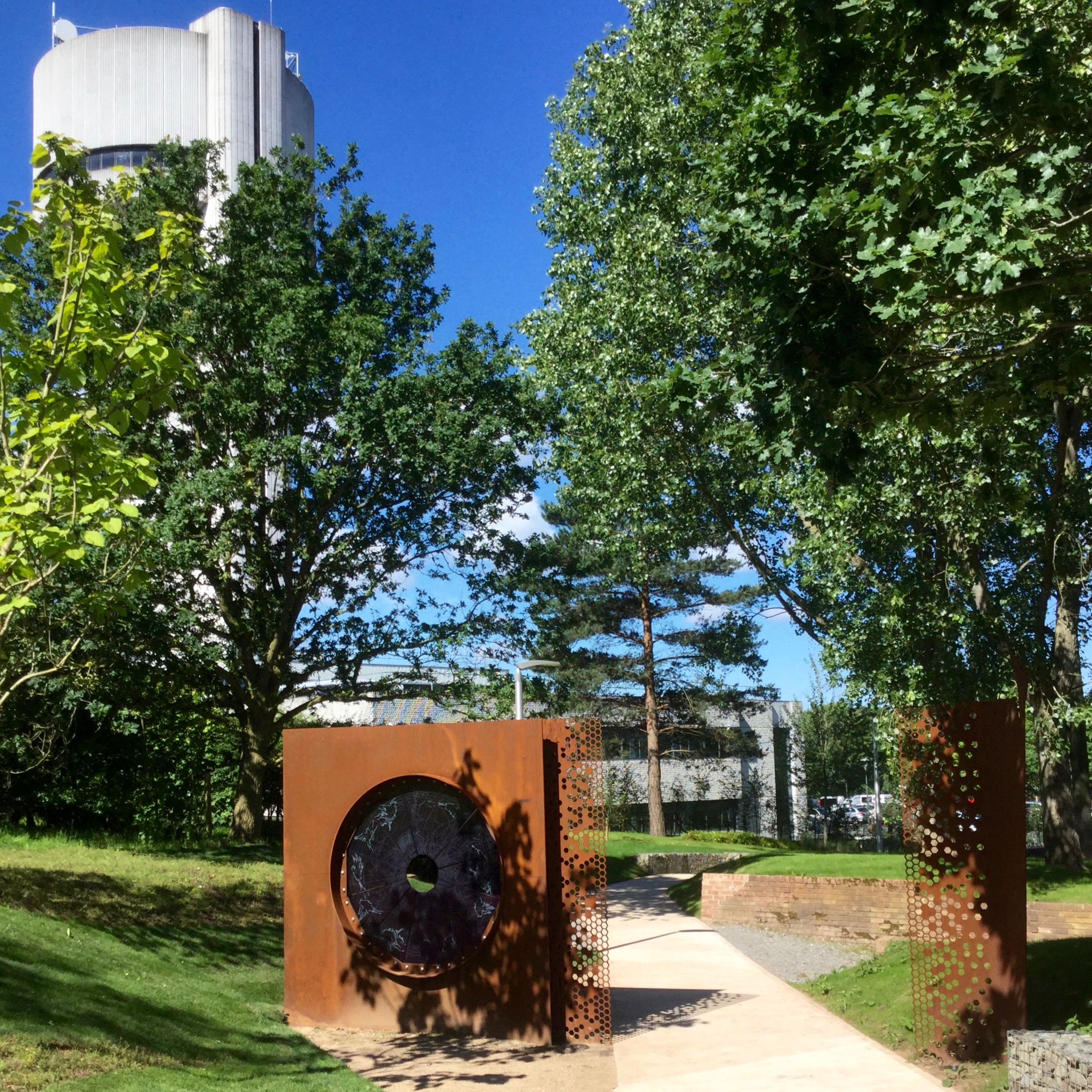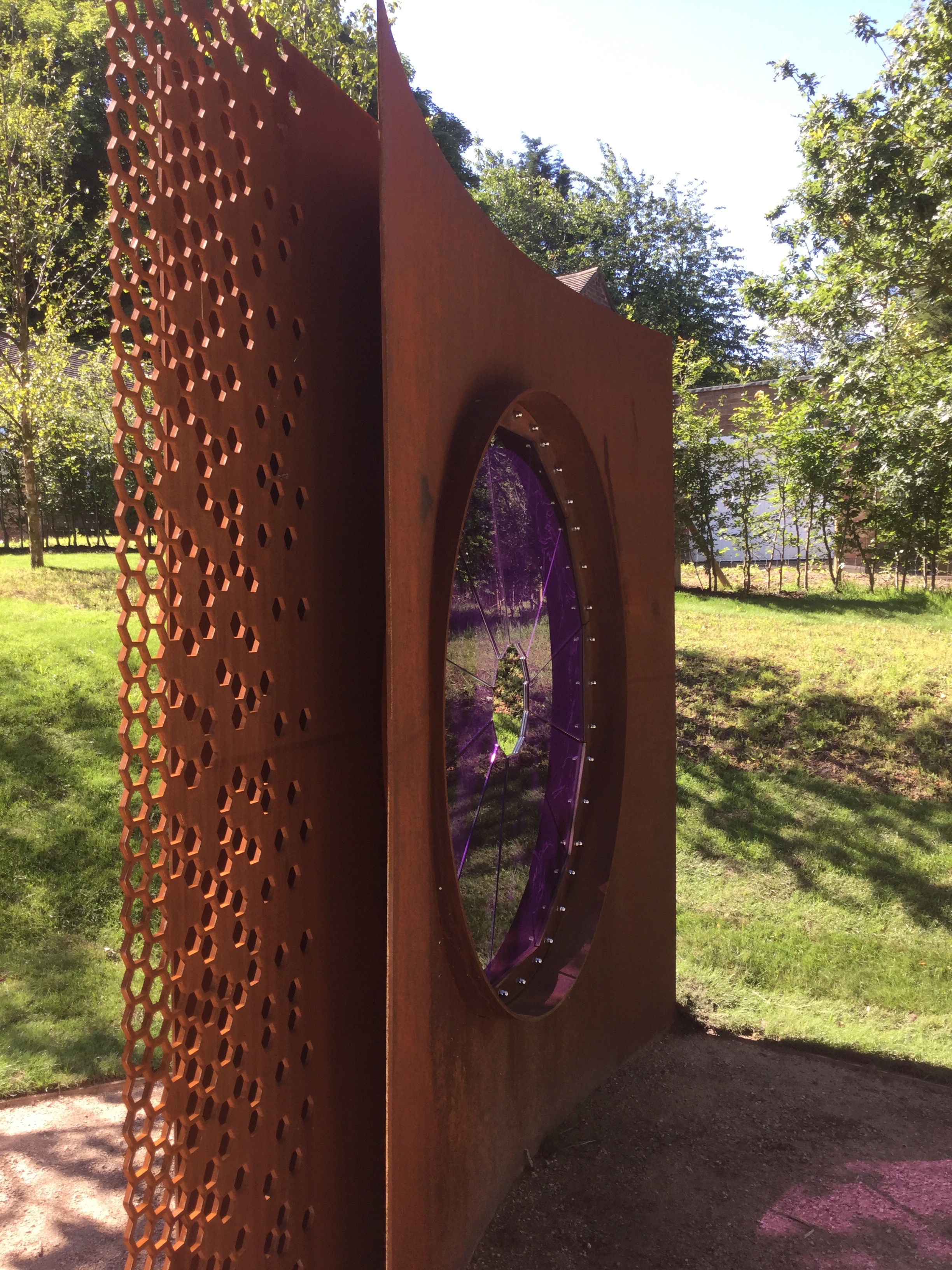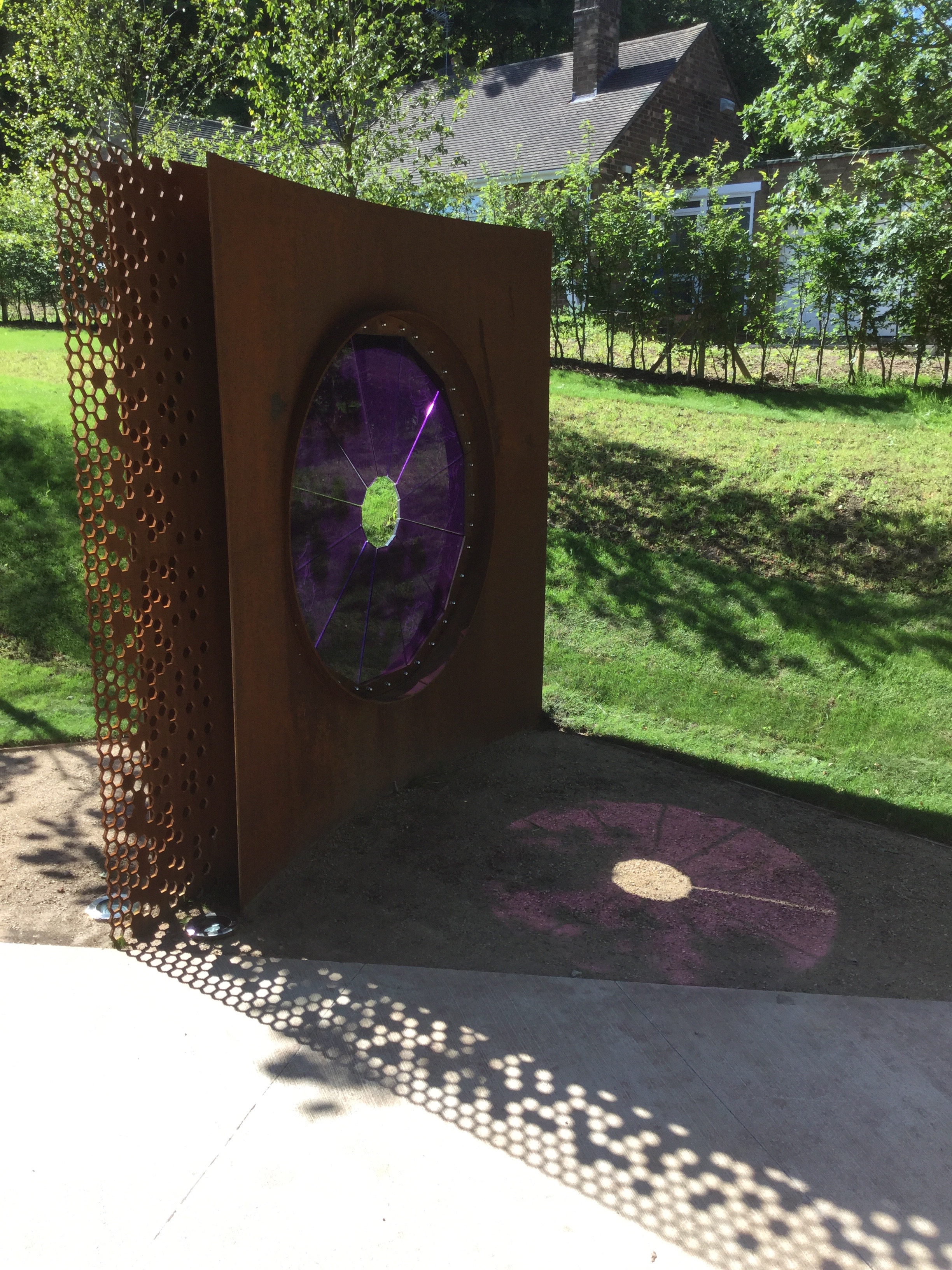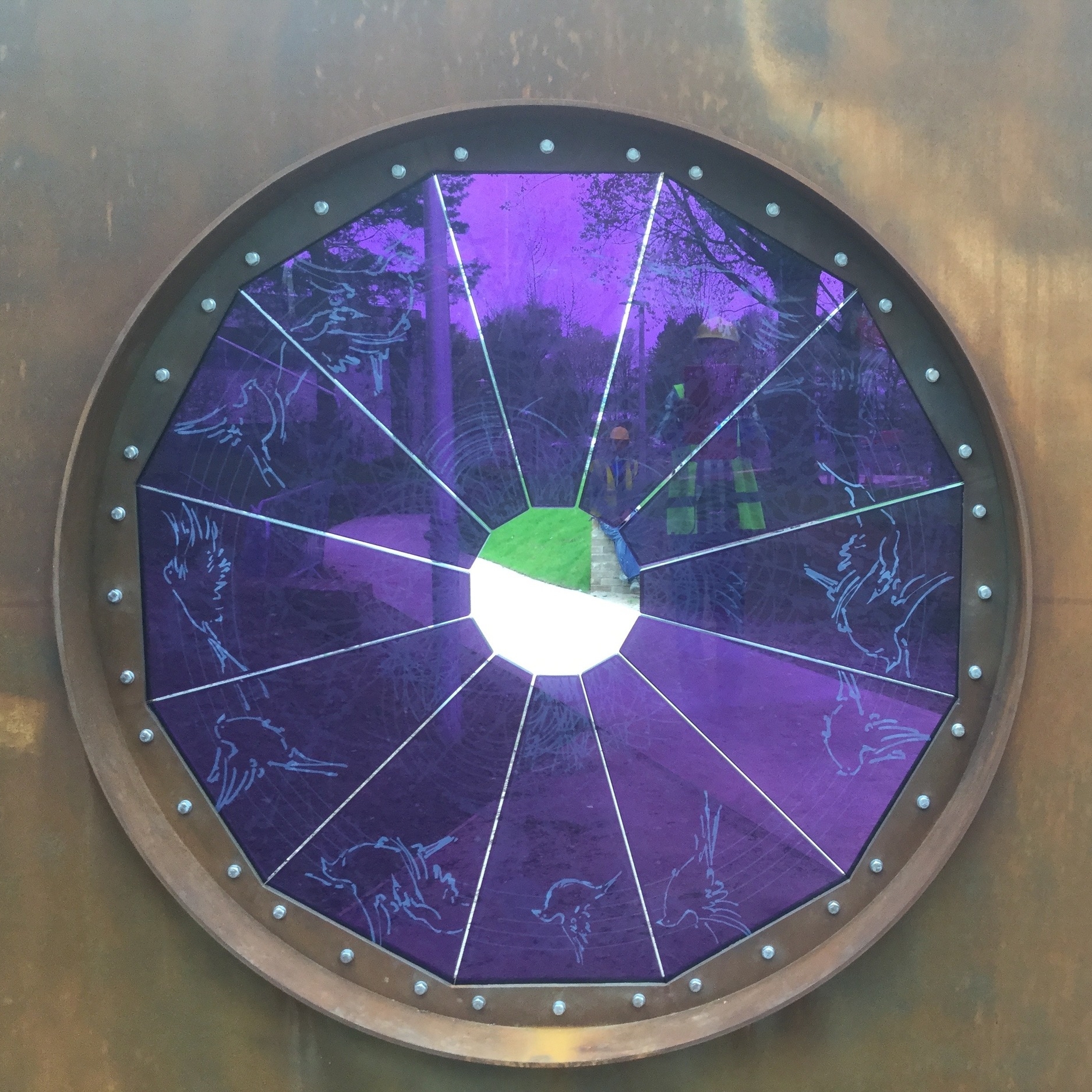Linear Garden
NAME : Linear Garden DATE : 2016 CLIENT : Langtree / STFC Council LOCATION : Daresbury PARTNERS : Planit-ie, Cumbiran Stone, Romag Glass, DP Structures, Adrian Wright (stonemason) CONTRACTOR : Galliford try
Aim
To dramatise the landscaping of a new linear park for Sci-Tech Daresbury, with reference to a well-known existing artwork by Arthur Dooley.
Concept
Much of the research carried out at Daresbury over the decades has exploited the properties of light waves and light particles. Indeed, the currency of scientific research in general can be thought of as ‘light’ in the sense of enlightenment. So light, considered both as a phsyical entity and a metaphor, presented itself to us as an organising theme.
Our thought was to illuminate the path through the park with a beam of white light suggesting scientific progress, refracted into a sequence of colours filling 5 picnic areas along the way. Each colour would create a different mood to help us tell a story of scientific enquiry growing and developing new ways of looking at the world over time.
Process
Refracting a beam of white light into colours at such a scale and in the open air proved unworkable. In place of coloured light we opted for glass containing a coloured transfer layer, which allowed us to add relevant imagery. To express enlightenment we replaced white light with a motif drawn from the Dooley sculpture, which shows the splitting of the atom releasing the spirit of a bird. We chose a repeated graphic image of a bird both to carry our theme and to link new and existing artworks. We used this and other related imagery within the coloured glass and in carvings on local sandstone undertaken by Adrian Wright.
Response
“A longest serving employee and most recent recruit to Sci-Tech Daresbury cut the ribbon to declare the opening of the Science and Innovation Campus’s new Linear Park. Tenants from over 100 high-tech companies based at the site were invited to mark the occasion and celebrate completion of the first phase of the wider Daresbury Park masterplan.”
“A garden associated with each colour punctuates the linear pathway, featuring a series of artworks by Broadbent Studio. Stephen Broadbent’s intricate installations crafted in glass, stone and steel are integrated into the shaped landscape, exploring elemental to advanced scientific understanding. Planit developed the Linear Park proposals in creative collaboration with Broadbent Studio, and the works were realised by the Contractor, Galliford Try.”
Arthur Dooley
It’s been a very significant project for the studio because of the connection to the sculptor Arthur Dooley who created in 1971 the ‘splitting of the atom sculpture’.
His sculpture includes 10 tons of magnetic steel and two 37” pole tips designed by Sir John Cockcroft taken from the first cyclotron to operate outside of the USA , with the data produced on the properties of neutrons used in the development of the first atom bomb. Arthur assembled these elements to represent a beam splitting the uranium nucleus, adding a dove of peace emerging among the fission products and emitted neutrons. His vision was for it to be set in a Japanese garden with the pole tips symbolising the mushroom clouds of Hiroshima and Nagasaki.
We’d love to see Arthur’s piece restored and re-positioned at the heart of the site. It expresses the theme of light as power - a message both exhilarating and cautionary.


